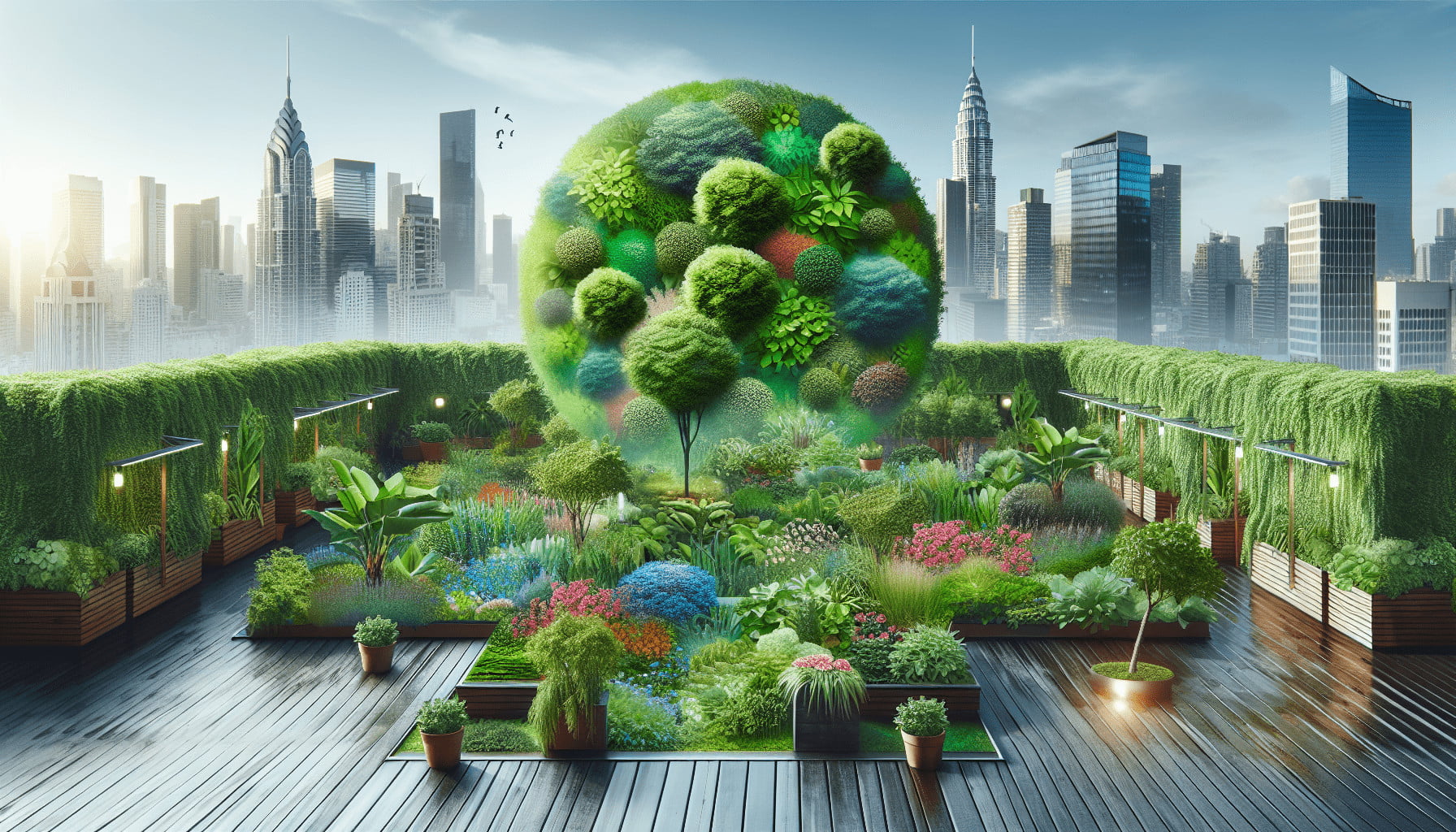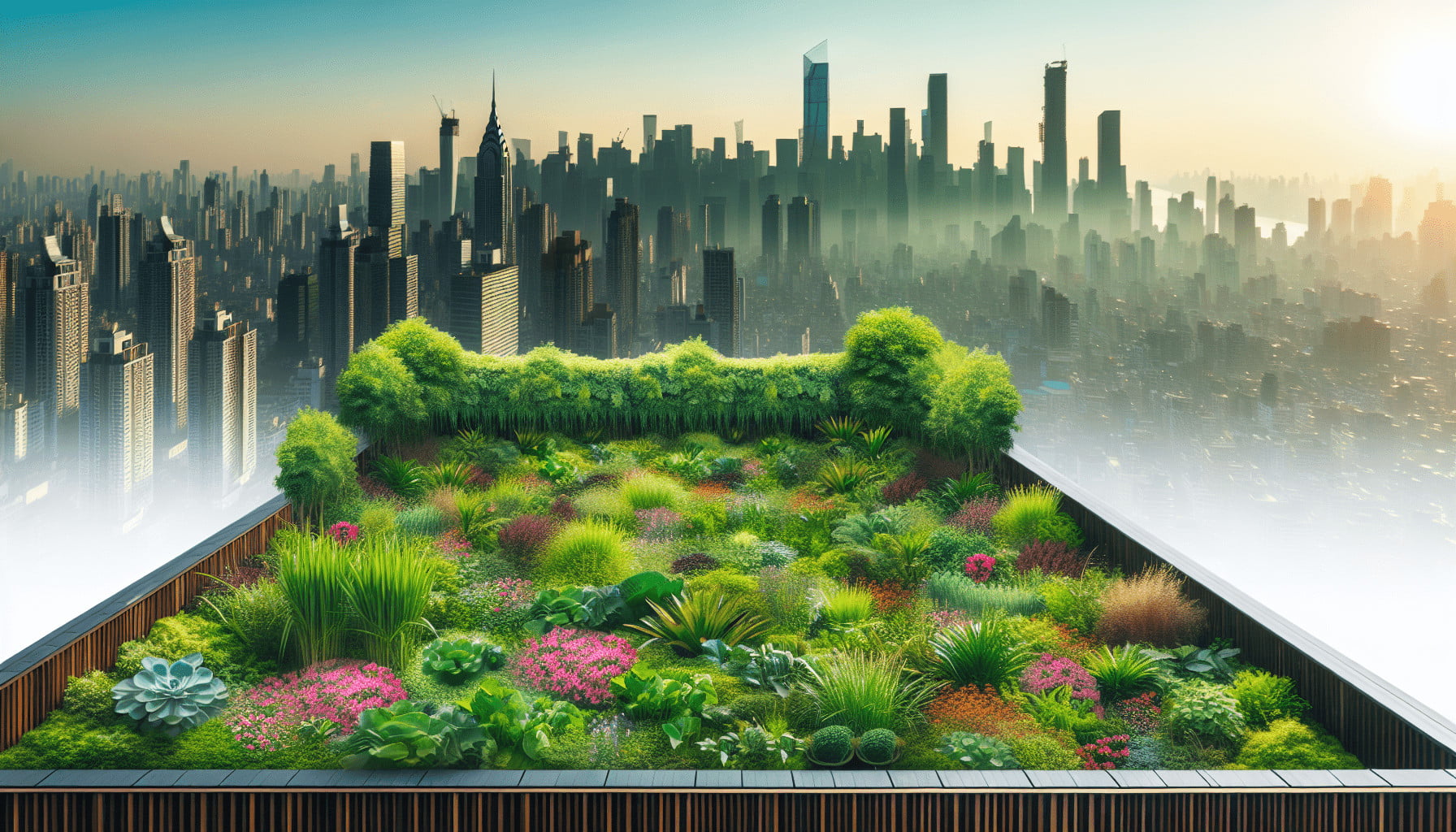Have you ever wondered what all the buzz around green roof gardens is about? You might have seen them featured in a magazine, showcased in an urban planning documentary, or maybe even admired one from your office window. As our living spaces become more congested, the push for innovative, sustainable solutions becomes increasingly urgent. Green roof gardens are one such innovation, and they’re more than just a pretty view—they offer a multitude of potential health benefits. Let’s explore some of these benefits and understand why incorporating a garden on your roof could be a fantastic idea.

What are Green Roof Gardens?
Green roof gardens, also known as rooftop gardens, are essentially a layer of vegetation planted over a waterproof membrane on a building’s roof. They can range from simple setups with grass and small plants to elaborate landscapes with trees, shrubs, and even water features.
Types of Green Roofs
To better understand green roof gardens, it’s helpful to know the different types:
Extensive Green Roofs:
- Lightweight and low-maintenance
- Typically planted with hardy, drought-resistant plants
- Ideal for buildings with limited load-bearing capacities
Intensive Green Roofs:
- Heavier and higher maintenance
- Can support a diverse range of plants, including trees and shrubs
- Suitable for buildings that can bear more weight
Semi-Intensive Green Roofs:
- A hybrid option
- Support a mix of plant types
- Moderate maintenance and weight requirements
Health Benefits of Green Roof Gardens
Improved Air Quality
One of the most significant benefits of green roof gardens is their ability to improve air quality. Plants naturally filter pollutants and toxins from the air. In urban environments where air quality can be poor, every bit helps.
- Pollutant Absorption: Green roofs can absorb pollutants such as ozone, sulfur dioxide, and nitrogen dioxide. These plants and soil components can trap dust, soot, and other particles, leading to cleaner air.
- Carbon Dioxide Reduction: Plants on green roofs can help reduce CO2 levels, as photosynthesis absorbs carbon dioxide and releases oxygen.
Stress Reduction and Mental Well-being
Being surrounded by greenery has a profound impact on mental health. Rooftop gardens offer a serene escape from the hustle and bustle of city life.
- Natural Therapy: Being able to access a green space can elevate your mood, reduce stress, and improve overall mental health.
- Sense of Community: Shared green spaces can provide a communal area where residents or employees can gather, fostering a sense of community and belonging.
Enhanced Physical Health
Green roof gardens aren’t just good for the mind—they’re good for the body too.
- Promotion of Physical Activity: Gardening itself is a great form of physical exercise, from planting and watering to pruning and harvesting.
- Food Production: If you grow edible plants, you can have fresh, organic produce right at your doorstep, promoting healthier eating habits.
Better Temperature Regulation
Green roofs have a natural insulating effect, which can help in regulating indoor temperatures.
- Cooling Effect: Plants absorb and deflect sunlight, which can significantly cool down a building, reducing the need for air conditioning.
- Energy Savings: This cooling effect can lead to substantial energy savings, as less energy is expended on heating and cooling.
Noise Reduction
Living in urban areas often means dealing with a lot of noise. Rooftop gardens can help mitigate this issue.
- Sound Insulation: The soil and plants on green roofs can act as a sound barrier, absorbing and deflecting noise.
- Quieter Living Spaces: Reduced noise pollution can make indoor environments more serene and conducive to relaxation and work.
Environmental Benefits of Green Roof Gardens
While the primary focus here is on health benefits, it’s worth mentioning that green roofs also offer significant environmental advantages.
Stormwater Management
Green roofs can absorb and retain a large amount of rainwater, reducing runoff and the likelihood of floods.
- Water Absorption: The plants and soil absorb rainwater, which then evaporates back into the atmosphere.
- Reduced Flood Risk: By retaining rainwater, green roofs can reduce the burden on stormwater systems and lessen the risk of flooding.
Biodiversity Enhancement
Rooftop gardens can become a mini-ecosystem, providing a habitat for a variety of plants, birds, and insects.
- Supporting Wildlife: Birds, bees, and other pollinators can find refuge and food sources in these green spaces.
- Plant Diversity: They can host a variety of plants, contributing to greater biodiversity in urban areas.
Implementing a Green Roof Garden: Tips and Considerations
Assessing Your Roof
Before you can start planting, you need to evaluate if your roof is suitable for a garden.
- Structural Evaluation: Ensure your roof can support the additional weight.
- Waterproofing: Make sure your roof has a proper waterproof membrane to prevent leaks.
Choosing Plants
Select plants that are well-suited to the climate and conditions of your rooftop.
- Climate Adaptation: Choose plants that can withstand the local climate and weather conditions.
- Maintenance Levels: Consider how much time and effort you can dedicate to maintaining the garden.
Professional Assistance
It might be helpful to consult with professionals when setting up your rooftop garden.
- Landscape Architects: These experts can design your rooftop garden, ensuring it’s both practical and beautiful.
- Contractors: Skilled contractors can handle the structural work and installation, making sure everything is done safely and correctly.

Case Studies: Successful Green Roof Gardens
The High Line, New York City
The High Line is a 1.45-mile-long elevated linear park, greenway, and rail trail created on a former New York Central Railroad spur. This green roof garden is famed for its beautiful design and the way it has enhanced the local environment and community.
Vancouver Convention Centre
The Vancouver Convention Centre boasts a sprawling, six-acre living roof. This green roof garden is one of the largest in North America and serves a variety of purposes, from insulating the building to providing a habitat for wildlife.
Overcoming Challenges in Green Roof Gardens
High Initial Costs
One of the primary barriers to green roof gardens is the initial investment. While the long-term benefits often outweigh the costs, the upfront expenses for materials, labor, and potential structural modifications can be significant.
- Financing Options: Look into grants, subsidies, or loans that might be available for green roof projects.
- ROI Calculations: Calculate the long-term cost savings from energy efficiency and potential increase in property value.
Maintenance Requirements
Green roofs require regular maintenance, albeit less intensive than traditional gardens.
- Routine Care: Regular watering, weeding, and pruning are necessary.
- Professional Services: Consider hiring professionals for periodic maintenance to ensure everything remains in top condition.
Climate Challenges
Not all climates are suitable for every type of plant.
- Local Expertise: Consult local gardening experts to select the best plants for your climate.
- Adaptable Solutions: Use planters and modular systems that can be adjusted or replaced as needed.
Future of Green Roof Gardens
Increasing Urban Green Spaces
As urban areas continue to grow, the importance of integrating green spaces cannot be overstated.
- Urban Planning: Cities are increasingly incorporating green roofs into building codes and development plans.
- Sustainability Goals: Green roofs can play a significant role in achieving broader environmental and sustainability goals.
Technological Innovations
New technologies are making green roof gardens more accessible and efficient.
- Smart Irrigation: Automated watering systems that adjust based on weather conditions and soil moisture levels.
- Lightweight Materials: Innovations in lightweight materials make it feasible to install green roofs on a wider range of buildings.
Community Involvement
Communities can play a crucial role in popularizing green roof gardens.
- Educational Programs: Educational initiatives can raise awareness about the benefits and practicalities of green roofs.
- Community Projects: Neighborhoods or organizations can collaborate on green roof projects, sharing resources and knowledge.
In Conclusion
Green roof gardens are far more than just an appealing aesthetic addition—they offer substantial health benefits, both mental and physical, along with numerous environmental advantages. With urban areas continually expanding, integrating green spaces like rooftop gardens becomes increasingly important. Whether you’re looking to improve air quality, reduce stress, or simply grow your food, a green roof garden can be a valuable addition to your living or working environment. So, as you think about making your space healthier and more sustainable, it might be worthwhile to consider what a rooftop garden could bring to your life.
By embracing the concept of green roof gardens, you’re not only contributing to your well-being but also playing a part in a broader movement towards greener, more sustainable urban environments.
